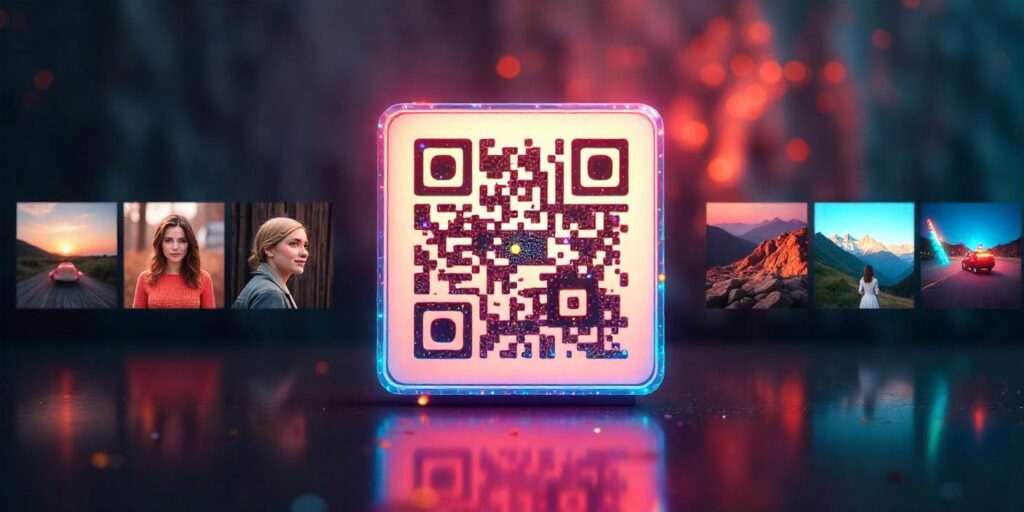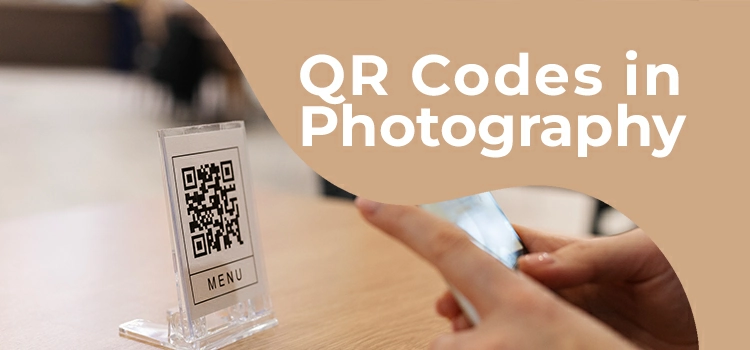In the world of digital photography, the right tools can make all the difference between a good shot and a stunning masterpiece. Snapseed, a powerful photo editing application developed by Google, has become a favorite among photographers and enthusiasts alike for its extensive range of features and user-friendly interface. With Snapseed, photographers can transform their images with just a few taps, applying filters, making precise adjustments, and even experimenting with advanced editing techniques.
But what if you could take your editing skills a step further? Enter QR codes—a revolutionary technology that is reshaping the way we share and collaborate in the digital space. Initially designed for tracking products in logistics, QR codes have evolved into versatile tools for sharing information quickly and efficiently. In photography, they offer a unique way to share custom edits, presets, and even entire editing workflows with other users.
What is Photography Snapseed QR Code
Photography Snapseed QR Codes are a powerful and innovative tool that bridges the gap between creative editing and effortless sharing in the realm of photography. At its core, a Snapseed QR code encapsulates specific editing settings or filters from the Snapseed app, allowing users to apply those settings to their images simply by scanning the code.
Why Use Photography Snapseed QR Code
As the digital photography landscape continues to evolve, the tools we use must adapt to enhance our creative expression and streamline our workflows. Snapseed QR codes represent a significant advancement in how photographers can manage their edits, share their styles, and collaborate with others. Here are several compelling reasons why you should consider incorporating Snapseed QR codes into your photography practice:
Streamlined Editing Process
One of the most significant advantages of using Snapseed QR codes is the efficiency they bring to your editing workflow. Instead of manually applying the same adjustments to multiple images, you can simply scan a QR code to instantly apply a set of edits. This saves you time and allows you to maintain a consistent look across a series of photos, which is especially beneficial for projects, events, or themed collections.
Easy Sharing of Custom Edits
Sharing your unique editing style has always been challenging. With Snapseed QR codes, you can generate codes that encapsulate your specific editing adjustments and share them with friends, clients, or followers. This makes it simple for others to replicate your work or explore new styles without needing to reverse-engineer your editing process. Whether you’re a professional photographer offering presets or an amateur sharing your techniques, QR codes facilitate a smooth exchange of creative ideas.
Enhanced Collaboration Opportunities
Photography is often a collaborative endeavor, and Snapseed QR codes foster this by allowing photographers to share their edits with ease. This feature is handy in group projects, workshops, or online challenges where participants may want to use each other’s editing settings. By scanning and applying QR codes, you can experience different editing styles and learn from others, enriching your skills and creative vision.
Consistency Across Your Portfolio
Consistency is key for photographers aiming to establish a recognizable brand or aesthetic. Snapseed QR codes enable you to create a signature editing style that can be easily applied across various images. This not only helps maintain visual coherence in your portfolio but also strengthens your brand identity, making your work more memorable to viewers.
Accessibility for All Skill Levels
One of Snapseed QR codes’ greatest benefits is their accessibility. Even those who are new to photo editing can utilize QR codes to achieve professional-quality edits without extensive knowledge of Snapseed’s features. By simply scanning a code, beginners can explore the adjustments made by experienced photographers, allowing them to learn and experiment with new techniques.
Read more: Ultimate Guide to the Axig_p_pf1e Face Smoothing Effect: Snapseed QR Code
How Photography Snapseed QR Code Work
Photography Snapseed QR Codes provide a powerful and user-friendly tool for enhancing your editing workflow. To create a QR code, you start by editing a photo in Snapseed, utilizing its various tools to achieve your desired look. Once satisfied with your edits, you can generate a unique QR code that encapsulates all the adjustments made by accessing the export options. This QR code can then be saved or shared, allowing others to replicate your editing style.

Applying a QR code is just as straightforward; you simply open an image in Snapseed, access the QR Code Scanner, and scan the code. Snapseed will automatically apply the embedded edits to your image, which you can further adjust to suit your preferences. This seamless process not only fosters creativity and collaboration among photographers but also simplifies the sharing of unique editing styles and techniques across various platforms.
The Future of Photography and Editing
As technology continues to evolve, the field of photography and editing is undergoing significant transformations. The future promises exciting advancements that will reshape how photographers create, edit, and share their work. Here are some key trends and innovations that are likely to influence the future of photography and editing:
Integration of Artificial Intelligence (AI)
Artificial intelligence is set to play a pivotal role in photography and editing, making processes more efficient and intuitive. AI-driven tools can assist in various aspects, from automating repetitive editing tasks to suggesting enhancements based on the image’s style. For instance, future photo editing software may include advanced features that automatically analyze an image and apply adjustments to achieve a specific artistic look, making high-quality editing accessible to photographers of all skill levels.
Augmented Reality (AR) and Virtual Reality (VR)
The integration of augmented reality (AR) and virtual reality (VR) is poised to revolutionize how photographers visualize and interact with their work. Imagine being able to view your edited photos in a virtual gallery or using AR to overlay your images onto real-world settings before taking the shot. This technology can enhance the creative process, allowing photographers to experiment with compositions and visual effects in real time, leading to more innovative and dynamic photography.
Enhanced Collaboration Tools
As photography becomes increasingly collaborative, the future will see the development of more sophisticated tools that facilitate teamwork among photographers and editors. Cloud-based platforms and apps will enable seamless sharing of images and edits, allowing teams to work together from different locations. These tools will likely incorporate features that support real-time feedback, version control, and QR code integration, making it easier to manage projects and share creative ideas.
Continued Rise of Mobile Photography
With the proliferation of high-quality smartphone cameras, mobile photography is here to stay. Future advancements in mobile technology will likely lead to even better image quality, enhanced editing capabilities, and more innovative apps like Snapseed. As a result, more photographers will embrace mobile devices as their primary tools for capturing and editing images, making photography more accessible and democratized.
User-generated content and Social Media Integration
The rise of social media has already transformed how photographers share their work, and this trend will continue to grow. User-generated content will remain a dominant force, with platforms encouraging users to share their photography experiences and editing processes. This environment fosters a sense of community and collaboration as photographers learn from one another and share tips, QR codes, and unique editing styles.

Benefits of Using QR Codes in Photography
- Simplified Sharing: Quickly share editing styles and techniques with others.
- Instant Edits: Apply complex edits instantly without manual adjustments.
- Enhanced Learning: Beginners can access and learn advanced editing techniques quickly.
- Improved Collaboration: Facilitate teamwork by sharing unique styles in group projects.
- Streamlined Workflow: Save time and effort by minimizing repetitive editing tasks.
- Marketing Opportunities: Use QR codes in promotional materials to showcase portfolios and offers.
- Flexibility for Experimentation: Encourage creative exploration by trying different styles without commitment.
- Accessibility for All Levels: Make advanced editing accessible to photographers of all skill levels.
Frequently Asked Questions
What is a Photography Snapseed QR Code?
A Photography Snapseed QR Code is a unique code generated from the Snapseed app that contains all the edits and adjustments made to an image. It allows users to share their editing styles and presets quickly, enabling others to replicate the same look on their photos by scanning the code.
How do I create a QR Code in Snapseed?
To create a QR Code in Snapseed, first edit your photo using the app’s various tools. Once you are satisfied with the edits, go to the export options and select the “Save QR Code” option. The app will generate a QR code that you can save or share with others, who can then scan it to apply your edits.
Can anyone use my QR Code edits?
Yes, anyone with access to your QR Code can scan it using the Snapseed app to apply your specific edits to their images. This feature encourages collaboration and sharing within the photography community, allowing others to explore and use your unique editing styles.
Do I need a particular app to scan QR Codes in Snapseed?
No, you do not need a particular app to scan QR Codes in Snapseed. The Snapseed app itself has a built-in QR Code scanner. Simply open the app, look for the QR Code option, and scan the code to instantly apply the edits saved within it.
Are there any limitations to using QR Codes in Snapseed?
While QR Codes in Snapseed are a powerful tool for sharing edits, they do have limitations. For instance, QR Codes can only store the edits from one specific image. Additionally, users need to have Snapseed installed to use the codes, and the edits may not look the same on different images due to variations in lighting, composition, or image quality.
Conclusion
Incorporating QR codes into photography, mainly through tools like Snapseed, represents a transformative step in how photographers create, edit, and share their work. The ability to quickly share editing styles, apply complex adjustments instantly, and collaborate seamlessly enhances the creative process, making it more accessible for photographers of all skill levels. As technology continues to evolve,
QR codes will undoubtedly play a vital role in shaping the future of photography, fostering a community that thrives on creativity, innovation, and collaboration. By embracing this technology, photographers can not only streamline their workflows but also enrich their artistic expression and connect with others in meaningful ways. Whether you are a seasoned professional or an aspiring enthusiast, utilizing QR codes can elevate your photography experience, opening up new avenues for exploration and creativity.

